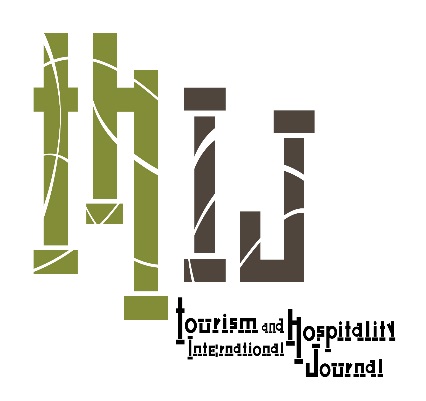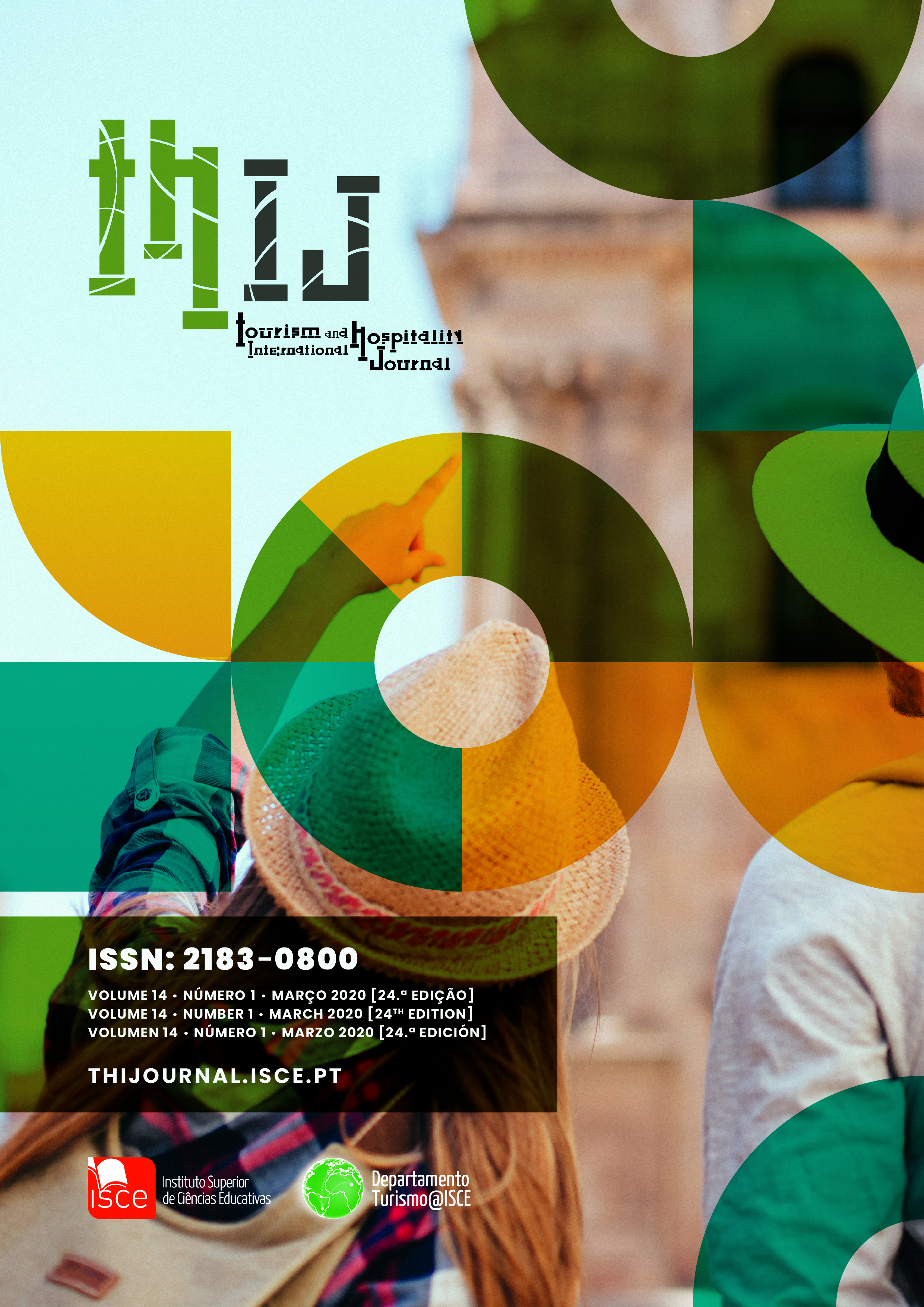Portuguese hoteliers' perception of ISO 9001 in the hotel sector
DOI:
https://doi.org/10.57883/thij14(1)2020.30677Keywords:
ISO 9001, Certification, Hotel sector, Customers perceptionAbstract
At a time when the quality of hotel services has been gaining high interest and weight in customer choice, some hotel units have resorted to certification by the NP EN ISO 9001:2015 quality standard. Considering that the existent literature on this standard in the hotel sector focuses on the organizations point of view, such as the advantages, disadvantages, difficulties, barriers and motivations of this standard implementation and the impact on the organization at the financial and organizational level, this research, as an alternative, focuses on the study of this standard from the point of view of portuguese hotel customers. Thus, this article aims to analyze the knowledge and importance of the certification of a hotel unit by the ISO 9001 quality standard when choosing a hotel by portuguese hotel customers. The empirical study, based on a questionnaire and a sample of 398 respondents, concluded that although quality is indeed an important factor in the decision-making process of portuguese hotel customers, most are unaware of the existence of ISO standards. Nevertheless, of customers who know the ISO standards, most know the ISO 9001 quality standard, although only a small percentage recognizes its presence in the hotel sector. Of the customers who do recognize its presence in the hotel sector, most do not search if the hotel unit is certified by the standard when choosing the hotel.
References
Associação Portuguesa de Certificação (APCER). (2015). Guia do Utilizador – ISO 9001:2015. Disponível em: https://www.apcergroup.com/portugal/images/site/graphics/guias/APCER_GUIA_ISO9001_2015.pdf [Consultado a 14 mar. 2018].
Bounabri, N., Oumri, A., Saad, E., Zerrouk, L. e Ibnlfassi, A. (2018). Barriers to ISO 9001 implementation in moroccan organizations: Empirical study. Journal of Industrial Engineering and Management, 11(1), 34–56.
Buttle, F. (1997). ISO 9000: Marketing motivations and benefits. International Journal of Quality & Reliability Management, 14(9), 936–947.
Christopher, M. (1986). Reaching the customer: Strategies for marketing and customer service. Journal of Marketing Management, 2(1), 63–71.
Comissão Nacional de Eleições. (2019). Recenseamento Eleitoral – Número de eleitores em 31 de dezembro de 2018. Disponível em: http://www.cne.pt/news/recenseamento-eleitoral-numero-de-eleitores-em-31-de-dezembro-de-2018_6394 [Consultado a 23 mai. 2019].
Fragoso, J. T. e Espinoza, I. L. (2017). Evaluación de la percepción de la calidad de los servicios bancarios mediante el modelo servperf. Contaduría y Administración, 62(4), 1270–1293.
Ghobadian, A., Speller, S. e Jones, M. (1994). Service quality. International Journal of Quality & Reliability Management, 11(9), 43–66.
Heras-Saizarbitoria, I., Arana, G. e Boiral, O. (2015). Do ISO 9001 – certified hotels get a higher customer rating than non–certified ones? International Journal of Hospitality Management, 51, 138–146.
Instituto Português da Qualidade (IPQ). (2015). Norma Portuguesa: Sistemas de gestão da qualidade, fundamentos e vocabulário (ISO 9000:2015). Disponível em: http://www1.ipq.pt/PT/site/clientes/pages/documentViewer.aspx?ctx=&local=Internet&documentId=IPQINTER-380-158054&tipoSubscricao=1 [Consultado a 6 jan. 2019].
Lehtinen, U. e Lehtinen, J. R. (1991). Two approaches to service quality dimensions. The Service lndustries Journal, 11(3), 287–303.
Llopis, J. e Tarí, J. J. (2003). The importance of internal aspects in quality improvement. International Journal of Quality & Reliability Management, 20(3), 304–324.
Lopes, J. (2014). Gestão da qualidade: Decisão ou constrangimento estratégico. Dissertação de Mestrado em Estratégia Empresarial. Universidade Europeia, Lisboa.
Madeira, M. A. (1993). Gestão da qualidade: Conceitos, sistemas de gestão, instrumentos. Lisboa: Secretariado para a Modernização Administrativa.
Martínez-Costa, M. e Martínez-Lorente, A. R. (2003). Effects of ISO 9000 certification on firms' performance: A vision from the market. Total Quality Management & Business Excellence, 14(10), 1179–1191.
Morales, L. E. e Medina, E. V. (2015). Aplicación del modelo servperf en los centro de atención Telcel, Hermosillo: Una medición de la calidad en el servicio. Contaduría y Administración, 60(1), 229–260.
Murmura, F. e Bravi, L. (2018). Exploring customers’ perceptions about quality management systems: An empirical study in Italy. Total Quality Management & Business Excellence, 29(11/12), 1466–1481.
Parasuraman, A., Zeithaml, V. A. e Berry, L. L. (1985). A conceptual model of service quality and its implications for future research. Journal of Marketing, 49(4), 41–50.
Pinto, A. e Soares, I. (2010). Sistemas de gestão da qualidade: Guia para a sua implementação. Lisboa: Edições Sílabo.
Pires, A. R. (2012). Sistemas de gestão da qualidade – Ambiente, segurança, responsabilidade social, indústria, serviços, administração pública e educação. Lisboa: Edições Sílabo.
Poksinska, B. e Dahlgaard, J. J. (2003). ISO 9001:2000 – the emperor’s new clothes. European Quality, 10(23), 58–69.
Poksinska, B., Dahlgaard, J. J. e Antoni, M. (2002). The state of ISO 9000 certification: A study of swedish organizations. The TQM Magazine, 14(5), 297–306.
PORDATA (2019). População residente que viajou em turismo: Total e por grupo etário. Disponível em: https://www.pordata.pt/Europa/Popula%c3%a7%c3%a3o+residente+que+viajou+em+turismo+total+e+por+grupo+et%c3%a1rio-2449-201480 [Consultado a 23 mai. 2019].
Psomas, E. L. (2013). The effectiveness of the ISO 9001 quality management system in service companies. Total Quality Management, 24(7), 769–781.
Ramphal, R. e Nicolaides, A. (2014). Service and quality and quality service: Satisfying customers in the hospitality industry. African Journal of Hospitality, Tourism and Leisure, 3(2), 1–19.
Raosoft (2019). Sample size calculator. Disponível em: http://www.raosoft.com/samplesize.html [Consultado a 23 mai. 2019].
Sampaio, P (2008). Estudo do fenómeno ISO 9000: Origens, motivações, consequências e perspectivas. Tese de Doutoramento em Engenharia de Produção e Sistemas – Ramo do Conhecimento Investigação Operacional. Universidade do Minho, Braga.
Sampaio, P., Saraiva, P. e Rodrigues, A. G. (2009). ISO 9001 certification research: Questions, answers and approaches. International Journal of Quality & Reliability Management, 26(1), 38–58.
Santos, G., Costa, B. e Leal, A. (2014). Motivation and benefits of implementation and certification according ISO 9001 – the portuguese experience. International Journal of Engineering, Science and Technology, 6(54), 1–12.
Silva, D. (2011). A certificação segundo a norma ISO 9001 na perspetiva do cliente. Dissertação de Mestrado em Engenharia Industrial – Ramo Qualidade, Segurança e Manutenção. Universidade do Minho, Braga.
Sousa, A. (2006). Cultura organizacional e qualidade: Um estudo de caso sobre uma empresa do ramo hoteleiro. Dissertação de Mestrado em Sociologia Económica e das Organizações. Instituto Superior de Economia e Gestão, Lisboa.
Spencer, B. A. (1994). Models of organization and total quality management: A comparison and critical evaluation. Academy of Management Review, 19(3), 446–471.
Sureshchandar, G. S., Rajendran, C. e Anantharaman, R. N. (2001). A conceptual model for total quality management in service organizations. Total Quality Management, 12(3), 343–363.
Wu, S. e Chen, J. (2011). Comparison between manufacturing companies that are ISO certified and those that are not certified using performance measurement model. Total Quality Management & Business Excellence, 22(8), 869–890.
Zeithaml, V. A., Berry, L. L. e Parasuraman, A. (1988). Communication and control processes in the delivery of service quality. Journal of Marketing, 52(2), 35–48.
Downloads
Published
How to Cite
Issue
Section
License
Copyright (c) 2020 This work is licensed under a Creative Commons - Attribution 4.0 International (CC BY 4.0)

This work is licensed under a Creative Commons Attribution 4.0 International License.
This work is published under the Creative Commons Attribution 4.0 International License.






